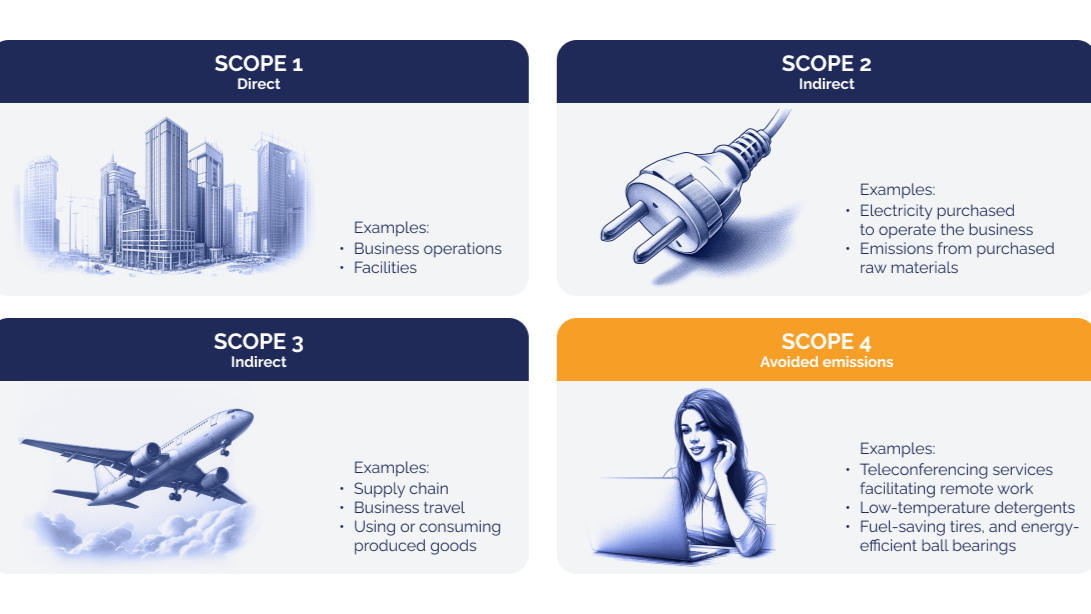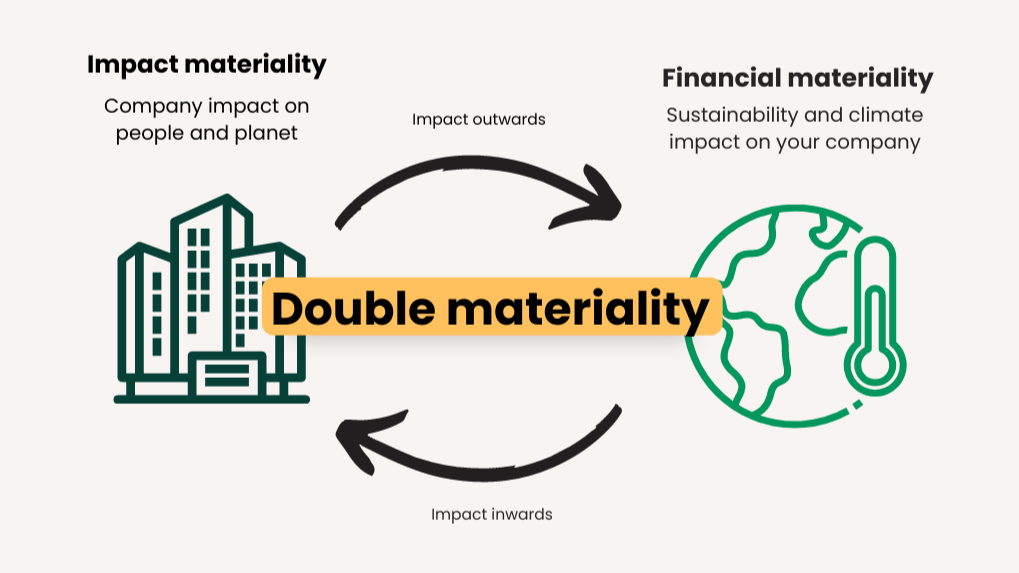In the world of sustainability, understanding and mitigating carbon emissions have become critical components of corporate responsibility. The global focus on sustainable practices have given rise to comprehensive carbon reporting, shedding light on various emission scopes within an organization. In recent years, Scope 4 emissions, often referred to as “avoided emissions,” have gained attention as an important aspect of corporate environmental responsibility. Unlike traditional Scope 1, 2, and 3 emissions, which focus on direct and indirect emissions within a company’s operations and value chain, Scope 4 emphasizes the positive impact that products or services have in reducing emissions elsewhere. By highlighting how businesses contribute to lowering emissions beyond their immediate activities, Scope 4 offers a new dimension to carbon reporting, reinforcing the growing importance of sustainability efforts in mitigating climate change.
The Basics of Scope 1, 2, and 3 Emissions
To contextualize Scope 4, let’s first review the other emission scopes:
- Scope 1 – These are direct emissions from sources that a company owns or controls. Examples include emissions from company vehicles or onsite manufacturing processes.
- Scope 2 – These cover indirect emissions from purchased energy, such as electricity or heat used in a company’s operations.
- Scope 3 – These are all other indirect emissions that occur across a company’s value chain. This can include emissions from the extraction of raw materials, transportation, business travel, and even the end use of a product.
Each of these scopes captures emissions created through various stages of a product’s lifecycle or corporate activities.
Scope 4 (Avoided Emissions)
Scope 4 emissions, also known as avoided emissions, represent the emissions that are prevented through the use of a company’s products or services. These emissions aren’t generated by the product itself but are avoided due to its contribution to reducing overall greenhouse gas (GHG) output elsewhere. Examples,
- Teleconferencing Software Company:
By providing teleconferencing solutions, this company reduces the need for business travel, leading to avoided emissions from airplanes, cars, and other forms of transport. The software enables virtual meetings, helping companies cut down on travel-related greenhouse gas (GHG) emissions.
- Energy-Efficient Appliance Manufacturers (LED Bulbs, Electric Vehicles,Etc):
Manufacturers of energy efficient products like LED bulbs or electric vehicles can report avoided emissions as their products consume significantly less energy than traditional alternatives. For example, LED bulbs use less electricity than incandescent bulbs, and electric vehicles reduce emissions by avoiding the use of fossil fuel powered cars.
- Solar Panel Manufacturers
Solar panel manufacturers can claim avoided emissions by providing renewable energy alternatives. By installing solar panels, homes and businesses avoid using electricity from coal or gas power plants, leading to a reduction in emissions from non renewable energy sources.
- Ride Sharing App
Ride sharing platforms can report avoided emissions by encouraging carpooling. By reducing the number of single occupancy car trips, these services lower overall fuel consumption and minimize traffic congestion, which reduces transportation related emissions.
- Building Insulation Company
Companies that produce building insulation materials can claim avoided emissions by helping reduce energy consumption. Better insulation minimizes the need for heating and cooling, leading to less energy use from HVAC systems, which typically rely on electricity or natural gas, reducing emissions.
How Does Scope 4 Differ from Scope 3?
While both Scope 3 and Scope 4 consider emissions along the value chain, the key distinction lies in the direction of impact:
- Scope 3 measures emissions produced by using a product. For example, a gasoline powered car’s emissions during its use phase would be considered Scope 3.
- Scope 4 on the other hand, measures the emissions avoidedthrough the use of a more sustainable alternative, such as an electric vehicle replacing a gasoline powered car.
This makes Scope 4 somewhat of an inverse to Scope 3, focusing on the environmental benefits rather than the harms associated with product use.
Why Is Scope 4 Reporting Important?
Although Scope 4 reporting is not yet required by major sustainability standards like the Global Reporting Initiative (GRI) or the Greenhouse Gas Protocol, it offers several benefits such as,
- Competitive Advantage – By demonstrating how their products or services reduce emissions, companies can attract environmentally conscious consumers and investors.
- Innovation Incentives– Recognizing avoided emissions can encourage businesses to invest in green technologies that may initially increase emissions but provide long term environmental benefits.
- Transparency and Credibility– Reporting on avoided emissions can increase transparency in sustainability efforts and contribute to broader environmental goals
Scope 4 emissions open a new dimension in carbon reporting, allowing companies to showcase how their products or services can be part of the solution to climate change. Businesses that adopt Scope 4 reporting now may gain an edge in the sustainability market, contributing to global emissions reductions in innovative ways.





While larger corporations often have complex data security systems in place, small businesses can also fall victim to a cyber attack if they do not take steps to protect themselves